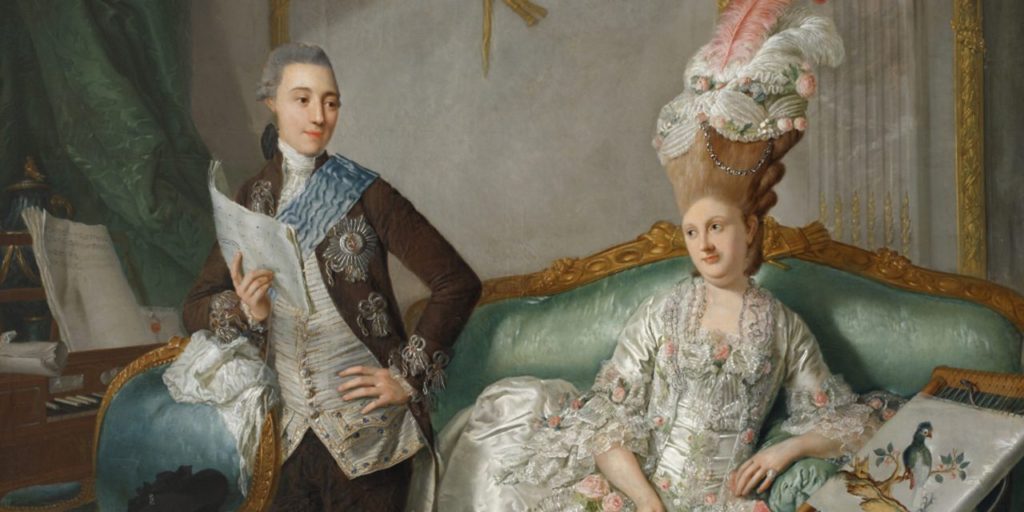Colonial Times refer to the 17th and 18th century period when Europeans colonized America. Tremendous changes have been introduced to fashion in the United States since its founding fathers. The wigs stepped into fashion in the 18th century and were used widely. It was a very fashionable item back in colonial times, the most popular being the periwig with a cascade of curls. The periwigs were famous in the early times. Later on, towards the end of the century, the wigs decreased in size.
Why did people wear wigs back in colonial times?

In Colonial America, it was a common practice to stand distinct among different classes. This trend became more popular under the influence of Europeans. Let’s have a look at why exactly the wig trend got popular among colonial men!
As a symbol of patriarchy
Many colonial men wanted to look older and wiser. Steven Mintz, in his article, told that wigs were a symbol of the practice of patriarchy in the colonial times. Husbands wore wigs to show themselves older than their wives. More the wigs, older the man used to be.
Distinction among classes
Wigs,along with their colors, were used to differentiate different classes. The Colonial Williamsburg Foundation states that the color of wigs used to indicate the class and position to which the person belonged. The colors of the wigs were chosen as follows:
• The gray wig was for professionals
• Brown wig was for tradesmen
• white wigs were for judges and military officers and formal occasions.
For Different Occasions
According to Terry Lyons, the wigmaker, the colonial men used to own an assortment of wigs. There were separate wigs for everyday wear, evening wear or business wear. Similarly, wigs were worn to match the outfit as well as the type of hair used to match with the occasion and purpose.
To imitate Europeans
Wig fashion began during the last half of the 17th century and reached its peak in the 18th century. Louis XIV of France was the first one to wear the full-bottomed periwig. This ignited a trend which was picked by the Americans who thought this trend would dignify their appearance and imitate the Europeans. Professor Scott R. Robinson testifies this fact.
To Appear Conservative
Although the trend of wigs reached its peak in the 18th century, it became less common towards the end. Gradually these wigs started getting viewed with suspicion. However, some colonials continued to wear these as a symbol of conservativeness. They thought it as a way to continue the tradition of their forefathers.
Powdered Wigs and Aristocrats
In the Colonial Times, people who wore powdered wigs were considered as elite members of society. The first person to wear the original periwig was King Louis XIII who wore it cover his premature balding. This is from where the trend began in the mid 17th century. Because the king was a royal person, the wig trend started in royalty. Therefore, wearing wig became a symbol of upper and conservative class.
The use of powdered wigs is also attributed to the venereal disease, syphilis, which spread back then. This STD became the worst epidemic in the Colonial Times and gave its sufferers bald patches. Back then, hair loss was considered very embarrassing because the long hair used to a status symbol. This is why the king started using the wig and the trend set in. The powder made from finely powdered starch and lavender was used to get rid of unwanted odor and parasites.
Lawyers in courts
The British lawyers in Colonial Times used to wear wigs as a symbol of formality and supremacy of law. It was a part of the formal attire for judges to be worn in the courtroom. Every member of the court used to wear a different wig according to his position.
Wigs and Women

From 1770 onwards, women also started to wear wigs. With the passage of time, the wigs worn by women started getting taller and sophisticated. This trend became more popular in France. As a general rule, men wore white wigs and women wore pastel-colored wigs. The quality and wig designers reflected the wealth and status of the person.The famous hairdresser, Baulard, used to make new headdresses every day for The Countess of Matignon, France, at the cost of the 24.000 livers a year.
What were the powdered wigs made of?
The powdered wigs were made of natural human hair. However, there were different qualities of wigs. The most expensive ones were made from human hair. The hair came from women who sold them to the barbers hence they were long enough to be cut short. Horseand goat hair were used for cheaper alternatives.
The inner layer of the wig was made of silk or cotton and it held the strands strongly together. The powder used in the wigs was made from finely powdered starch and mixed with lavender. It helped the men get rid of the unpleasant odor as well as unwanted parasites.
Type of wigs worn in Colonial Times
Peruke, periwig, was the most popular wig style worn by the Colonial British men. This wig was made of long human/animal hair and had curls n the sides. The hair were drawn back on the nape of the neck. Before the 17th century, peruke was worn as a symbol of adornment.
However, after the 17th century and in Colonial Times, this wig was worn as a distinctive feature of one’s costume. The fashion was initially set by Louis XIII of France. After this, wigs became a symbol of class, age, profession, and conservativeness.